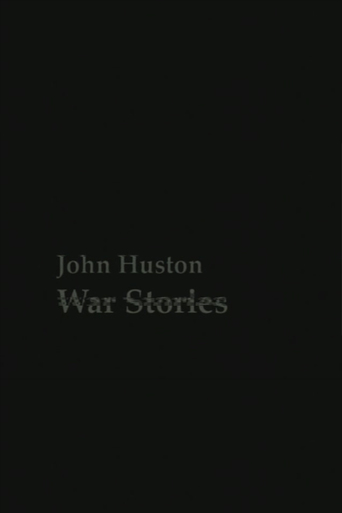Robert J. Maxwell
John Huston, the Hollywood director who made the war-time documentaries described in this film, is rather a dull interview subject but a fascinating guy. He had the long, thin, somewhat bashed-in face of the boxer that he once was. He'd also been mixed up in the Mexican cavalry and other enterprises that seem outré by contemporary standards. He wound up a writer, then a director, in Hollywood. Among his credits: "The Treasure of the Sierra Madre," "The Asphalt Jungle," "The African Queen," and "The Maltese Falcon." Quite a guy -- and quite a director.In this interview -- interspersed with sometimes long segments from his war-time documentaries -- he relaxes and casually relates some of his experiences as a captain, later a major, in the US Army Signal Corps.The output was varied. "Let There Be Light" will come as something of a shock to people who believe that hysterical illnesses under stress, formerly known as shell shock, is nothing more than a sign of moral weakness or a fake way of avoiding combat."Report From the Aleutians", Huston tells us, was only a "propaganda film" and it shows.His magnum opus was "The Battle of San Pietro." Huston and his crew shot it on the spot in Italy, around or near the famous Monte Cassino. It couldn't be more different from John Ford's sentimental and heroic "Battle of Midway." The narrative and the images are a blunt report of what happened. Words or expressions like "bravery" or "the supreme sacrifice" do not occur. There are shots of American bodies -- American, mind you -- being wrapped up in mattress covers. (No faces are shown.) Enlisted men are hit and fall while being filmed. An attack by American soldiers against almost impregnable defensive terrain begins. From the narrative: "At 100 yards our men began taking heavy fire. . . . No one made it beyond the 800-yard line." That's it. No, "This smiling soldier is Chester C. Smith from Frankfort, Indiana. He sure likes those C rations!" Smith may be just another body folded up among the Italian rocks."The Battle of San Pietro" was heavily edited by the military. Huston describes the first showing in a screening room with a dozen or so high-ranking officers. After a while, the ranking general stood up and walked out. A few minutes later, the second highest-ranking general followed, and so on down the line until Huston was practically alone in the screening room. Huston comments: "I thought, 'What ***holes.'" But he doesn't tell any jokes or funny stories during the interview, nor does he seem moved emotionally. At one point, loud barking can be heard in the background and Huston growls, "Cut! ***damn that dog." For the rest, he presentation is full of pauses and hesitations. He's not very entertaining as an interview subject. He really doesn't have to be.

